
Find Help
More Items From Ergsy search
-

How can teachers support students with ADHD?
Relevance: 100%
-
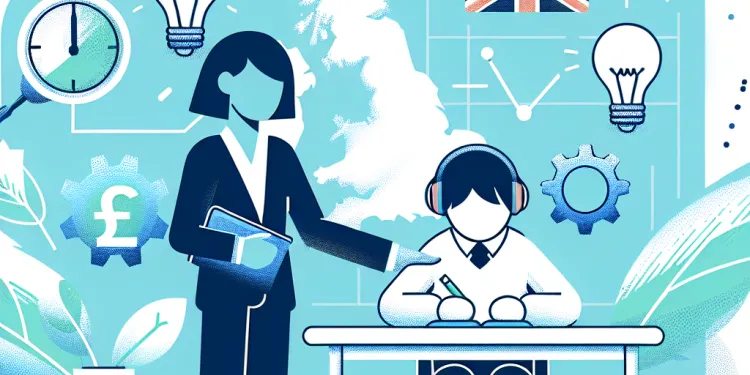
What role do teachers play in supporting SEND children?
Relevance: 56%
-

What is ADHD?
Relevance: 50%
-
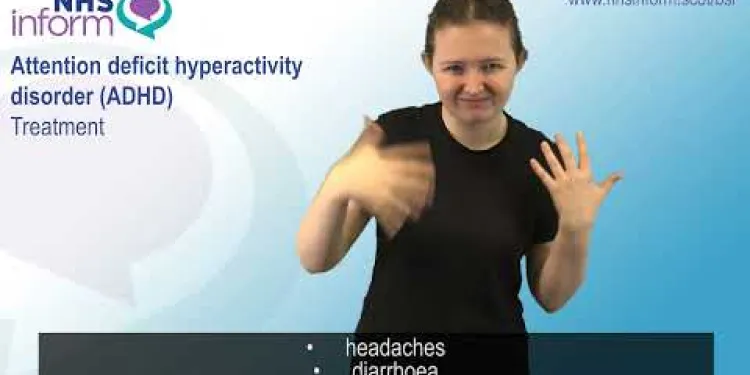
Attention deficit hyperactivity disorder (ADHD) - Treatment
Relevance: 45%
-
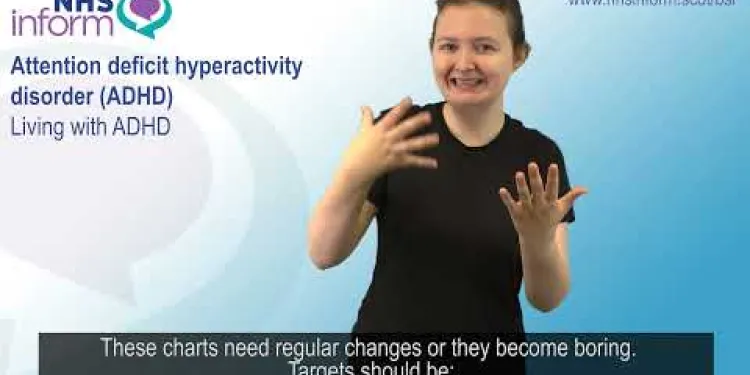
Attention deficit hyperactivity disorder (ADHD) - Living with ADHD
Relevance: 44%
-

How is ADHD diagnosed?
Relevance: 43%
-

What are common treatments for ADHD?
Relevance: 43%
-
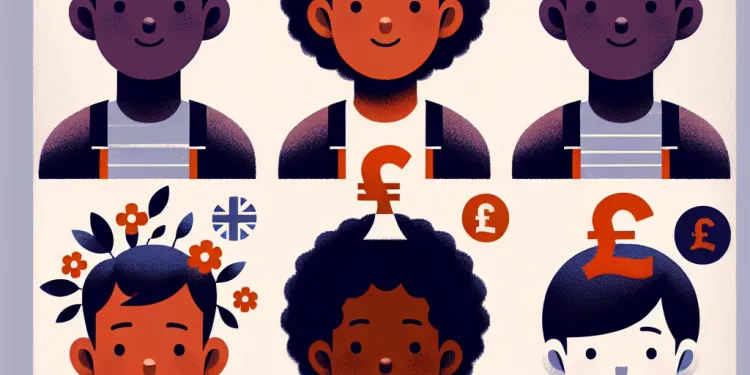
Is ADHD more common in boys or girls?
Relevance: 40%
-
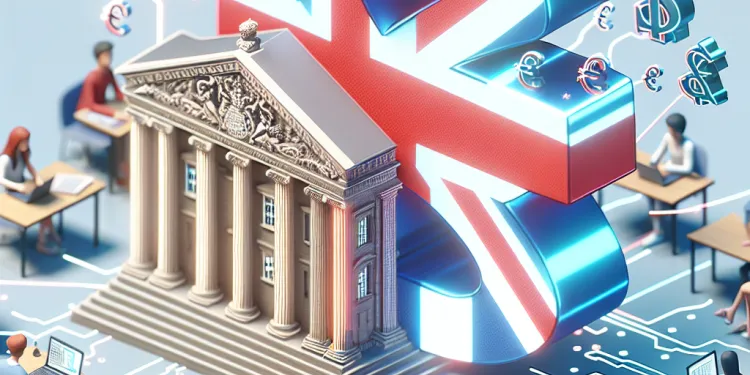
Can students apply for Cost-of-Living support?
Relevance: 39%
-
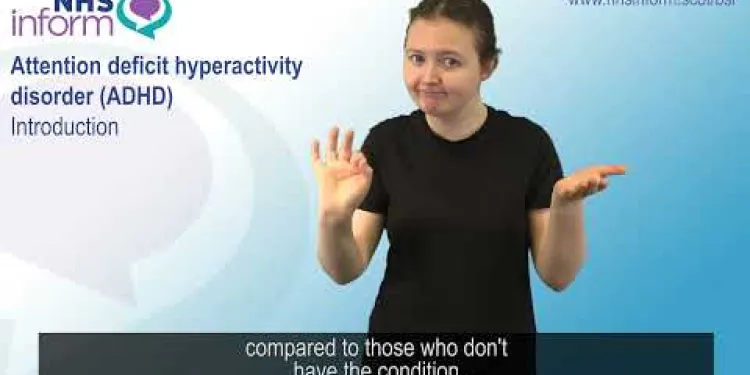
Attention deficit hyperactivity disorder (ADHD) - Introduction
Relevance: 39%
-
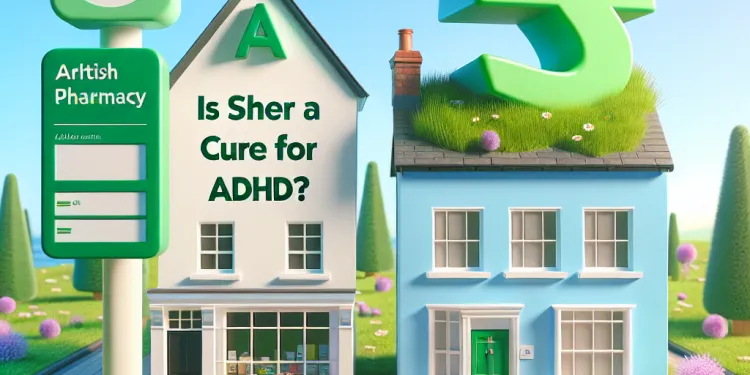
Is there a cure for ADHD?
Relevance: 38%
-

Can lifestyle changes help manage ADHD?
Relevance: 38%
-

Can therapy help individuals with ADHD?
Relevance: 37%
-
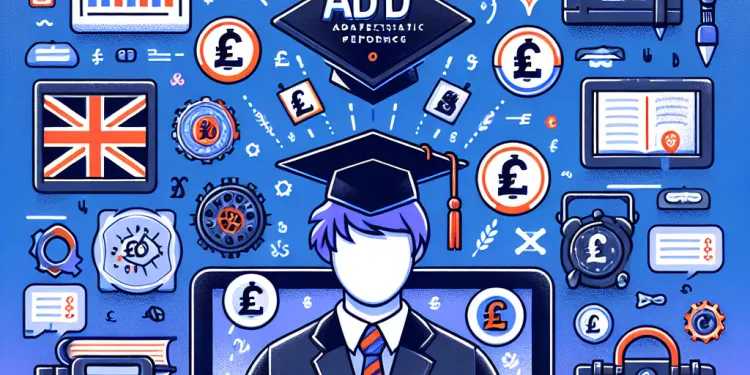
Can ADHD affect academic performance?
Relevance: 37%
-

How does ADHD affect executive function?
Relevance: 36%
-

Are there any risks associated with untreated ADHD?
Relevance: 36%
-

Are there different types of ADHD?
Relevance: 36%
-

What causes ADHD?
Relevance: 36%
-
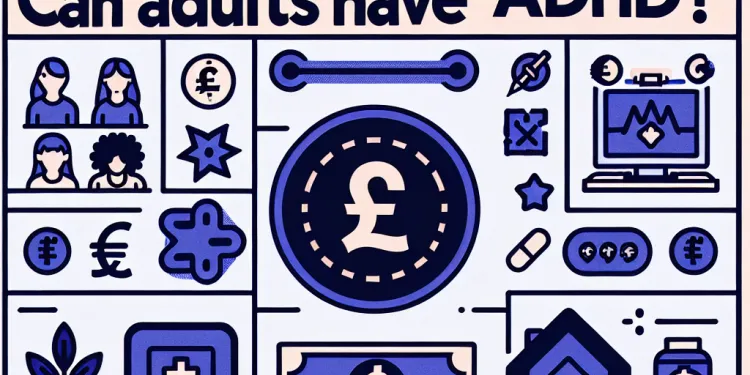
Can adults have ADHD?
Relevance: 35%
-

Can ADHD be inherited?
Relevance: 35%
-
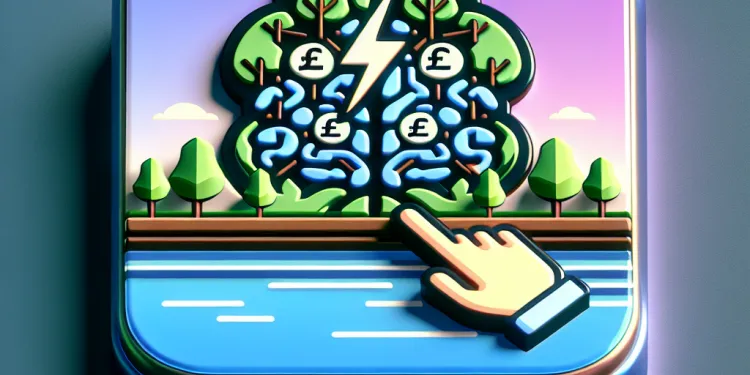
What role does the environment play in ADHD?
Relevance: 34%
-
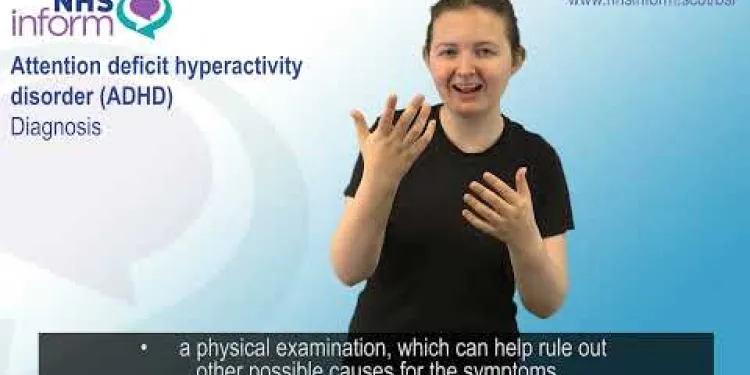
Attention deficit hyperactivity disorder (ADHD) - Diagnosis
Relevance: 34%
-
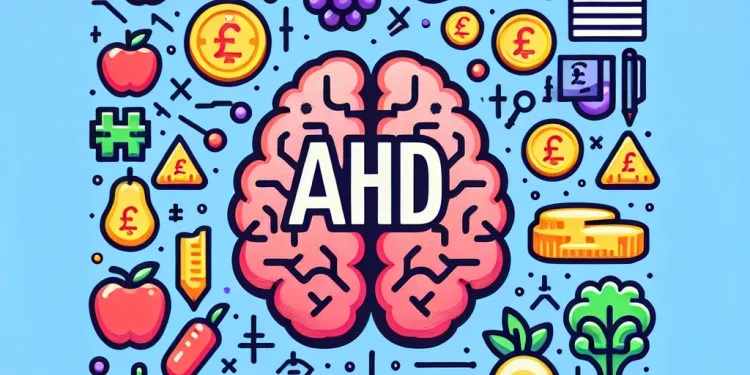
Can diet affect ADHD symptoms?
Relevance: 34%
-
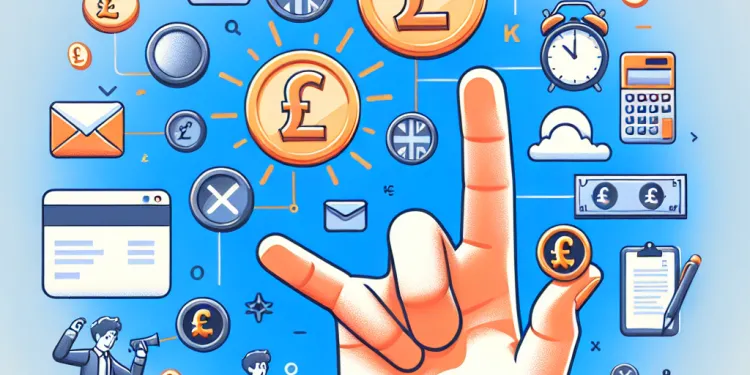
What are the main symptoms of ADHD?
Relevance: 33%
-

What is ADHD?
Relevance: 32%
-
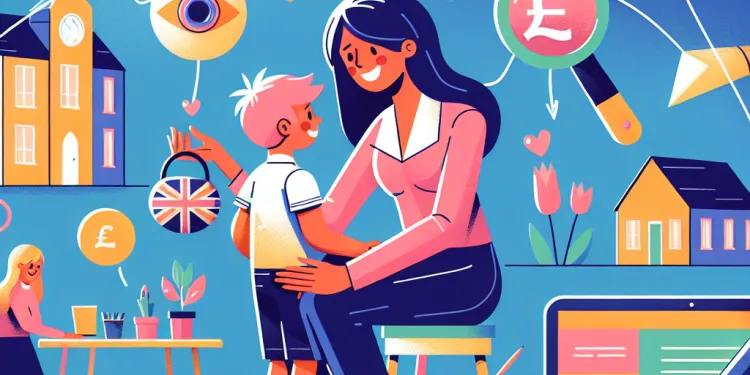
What support is available for SEND children in schools?
Relevance: 30%
-

What funding options are available for nursing students in the UK?
Relevance: 29%
-

What is the SENCO's role in a school?
Relevance: 28%
-

UNDERSTANDING YOUR STUDENT LOAN: A GUIDE FOR ENGLISH STUDENTS STARTING AN UNDERGRADUATE COURSE 2023
Relevance: 28%
-

Is there an income threshold for students to qualify for the payment?
Relevance: 27%
-

Are students eligible for the £500 cost of living payment?
Relevance: 27%
-
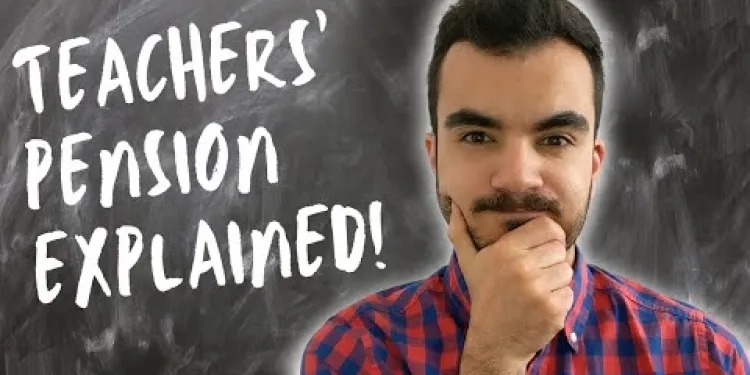
Teachers Pension Explained | All you need to know | Final Salary & Career Average Earnings
Relevance: 27%
-
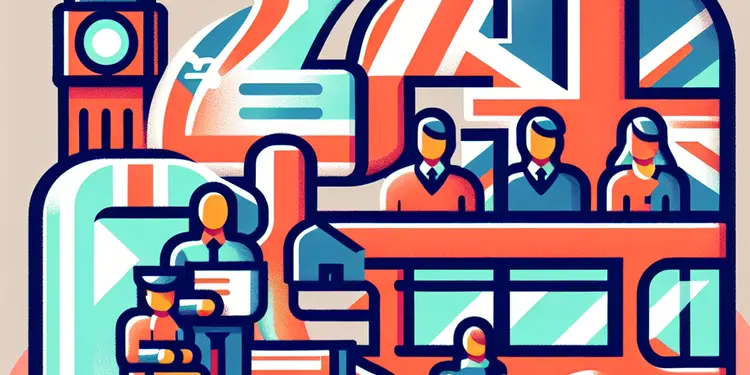
Do international students qualify for the £500 payment?
Relevance: 27%
-
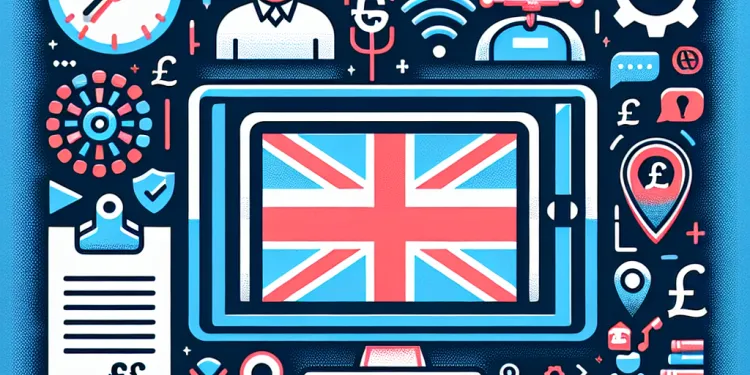
Are students required to pay for a TV license?
Relevance: 27%
-
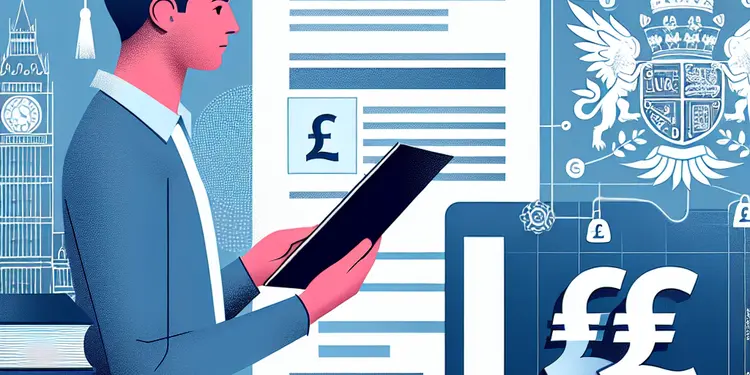
Is documentation of student status required for the payment?
Relevance: 27%
-

How can schools create an inclusive environment for SEND children?
Relevance: 27%
-
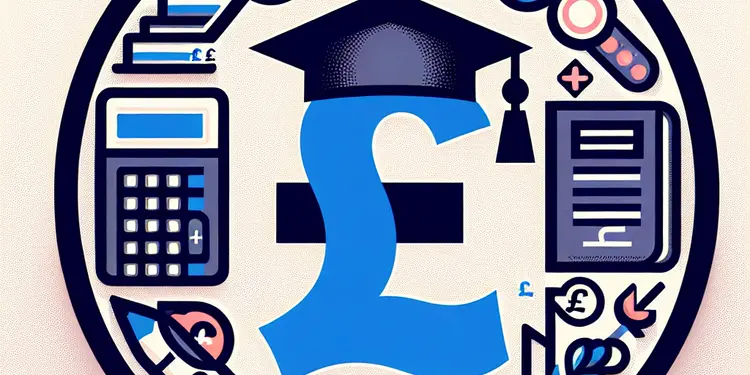
Can part-time students apply for the £500 payment?
Relevance: 27%
-

Will students receive the payment directly into their bank accounts?
Relevance: 26%
-

Can students receive the £500 cost of living payment?
Relevance: 26%
-

What criteria must be met for students to receive the payment?
Relevance: 25%
Understanding ADHD
Attention Deficit Hyperactivity Disorder (ADHD) is a condition characterized by symptoms such as inattention, impulsivity, and hyperactivity. It affects students' ability to focus, organize tasks, and follow instructions. In the UK, supporting students with ADHD in educational settings is crucial for their academic success and wellbeing.
Creating a Supportive Classroom Environment
Teachers can create a supportive environment for students with ADHD by minimizing distractions. Positioning these students away from windows or noisy corridors can help. Additionally, maintaining a structured classroom routine can provide stability and predictability. Visual schedules and clear, concise instructions are beneficial, as are defined transitions between activities.
Differentiated Instruction
Adapting teaching methods to support diverse learning needs is essential. Teachers should consider using a variety of instructional strategies, such as breaking tasks into smaller, manageable parts and employing multi-sensory teaching techniques. Incorporating hands-on activities and using visual aids can assist in keeping ADHD students engaged and focused.
Implementing Behavioural Supports
Positive reinforcement can be an effective strategy to support students with ADHD. Recognizing and rewarding positive behavior helps reinforce desired actions. Establishing clear rules and consequences creates an understanding of expectations. Teachers can use a behaviour chart or reward system to motivate students and track progress.
Encouraging Organizational Skills
Students with ADHD often struggle with organization and time management. Teachers can help by providing tools such as checklists, planners, and schedules. Regularly reviewing these tools with students and guiding them in setting realistic goals can enhance their organizational skills. Encouraging students to use colour-coded folders or apps for tracking assignments can also be beneficial.
Collaborating with Parents and Specialists
Communication and collaboration with parents and specialists are vital in supporting students with ADHD. Teachers should establish regular contact with parents to discuss progress and share strategies. Collaborating with special education coordinators, school psychologists, and occupational therapists can also provide additional support and resources tailored to each student’s needs.
Professional Development and Training
Continuous professional development is essential for teachers to stay informed about best practices for supporting students with ADHD. Participating in workshops, courses, and training sessions dedicated to ADHD can equip teachers with the necessary skills and knowledge. Schools can also organize in-house training sessions to share strategies and resources among staff members.
Fostering Self-Advocacy Skills
Empowering students with ADHD to understand and communicate their needs is crucial for their long-term success. Teachers can support this by helping students recognize their strengths and challenges. Encouraging self-reflection and providing opportunities for students to express their feelings and preferences promote self-advocacy and independence.
Conclusion
Supporting students with ADHD in UK schools requires a multifaceted approach involving environmental adjustments, differentiated instruction, and collaboration. By providing a nurturing and understanding atmosphere, teachers can significantly enhance the educational experience of students with ADHD, enabling them to achieve their full potential.
Understanding ADHD
ADHD stands for Attention Deficit Hyperactivity Disorder. It makes it hard to pay attention, stay still, or think before acting. This can make it difficult for kids to focus in school. It’s important to help kids with ADHD do well in school and feel good about themselves.
Creating a Supportive Classroom Environment
Teachers can help by keeping the classroom free of distractions. It’s good to sit kids with ADHD away from things like windows or noisy hallways. Having a daily routine in class helps too. Using picture schedules and giving clear instructions help kids know what to do next.
Differentiated Instruction
Teachers can teach in different ways to help all kids learn. Breaking big tasks into small steps is good. Using pictures, hands-on activities, and involving many senses keeps kids with ADHD interested. This helps them stay focused on what they are learning.
Implementing Behavioural Supports
Saying “great job” when kids do well can really help. Rewarding good behavior shows kids what is good to do. Teachers can have a chart with stickers for each good deed. This helps kids see their progress and stay motivated to do well.
Encouraging Organizational Skills
Kids with ADHD often forget things and lose track of time. Teachers can help them by using checklists, planners, and schedules. Checking these tools with kids can help improve their organization. Using colorful folders or apps to keep track of homework is helpful, too.
Collaborating with Parents and Specialists
It is important for teachers to talk with parents and specialists about how to help kids with ADHD. Regular chats with parents can show how the child is doing and share ideas that work. Working with specialists like school counselors can also give extra help and ideas.
Professional Development and Training
Teachers need to keep learning about ADHD. Going to workshops or training can give teachers more ideas to help kids with ADHD. Schools can also have meetings where teachers share what they know with each other.
Fostering Self-Advocacy Skills
Helping kids with ADHD understand and talk about what they need is very important. Teachers can help by showing kids what they are good at and where they need help. This lets kids speak up about what they need and become more independent.
Conclusion
Helping kids with ADHD in school takes many different steps. Changes in the classroom, teaching in different ways, and working with others all help. By making the classroom a friendly place, teachers help kids with ADHD do their best and feel happy.
Frequently Asked Questions
What are some general strategies teachers can use to support students with ADHD?
Teachers can support students with ADHD by providing clear and consistent routines, offering frequent breaks, minimizing distractions, using simple and clear instructions, and providing positive reinforcement.
How can teachers help students with ADHD stay organized?
Teachers can help by using organizational tools like planners and checklists, breaking tasks into smaller steps, and providing visual aids to support task and time management.
What classroom accommodations are helpful for students with ADHD?
Helpful accommodations may include seating students in a distraction-free area, providing extra time on tests, allowing movement breaks, and permitting the use of fidget tools.
How can teachers modify assignments for students with ADHD?
Teachers can modify assignments by shortening tasks, giving choices of tasks, allowing alternative formats for responses, and focusing on quality rather than quantity.
How can teachers effectively communicate with parents of students with ADHD?
Effective communication can be achieved through regular updates, empathy and understanding, discussing strategies used in class, and collaborating on action plans for consistency.
What type of classroom environment is best for students with ADHD?
A structured, predictable, and calm environment with clear boundaries and minimal distractions is ideal for supporting students with ADHD.
How can teachers use positive reinforcement to support students with ADHD?
Teachers can use praise, reward systems, and positive feedback to reinforce desired behaviors and motivate students with ADHD.
How can technology be used to support students with ADHD?
Technology such as timer apps, educational software, and text-to-speech programs can support time management, engagement, and comprehension.
What are some signs that a student might have ADHD?
Signs include difficulties with attention, hyperactivity, impulsivity, trouble following instructions, and forgetfulness.
How important is collaboration with special education staff in supporting students with ADHD?
Collaboration with special education staff is crucial for developing and implementing effective IEP or 504 plans tailored to the needs of students with ADHD.
How can teachers support the social skills of students with ADHD?
Teachers can support social skills by facilitating peer interactions, modeling appropriate behaviors, and using social stories or role-playing exercises.
What role does classroom physical setup play in supporting students with ADHD?
Classroom setup can reduce distractions by placing students away from windows and high-traffic areas and ensuring they are seated near the teacher for guidance.
How can teachers address impulsive behaviors in students with ADHD?
Teachers can address impulsivity by setting clear rules, using visual cues to signal expected behaviors, and practicing self-regulation techniques.
How can active learning benefit students with ADHD?
Active learning involves engaging students in hands-on activities, which can help maintain attention, foster engagement, and enhance retention of information.
Why is it important to provide immediate feedback to students with ADHD?
Immediate feedback helps students understand the consequences of their actions and reinforces learning while keeping them engaged and motivated.
How can movement be incorporated into lessons to support students with ADHD?
Movement can be incorporated through activities like classroom stretching, educational games, and allowing students to stand during tasks or lessons.
What are some ways to tailor instruction for students with ADHD?
Instruction can be tailored by chunking information, using multi-sensory approaches, and allowing for choice and personalization in learning.
How can teachers help students with ADHD develop self-advocacy skills?
Teachers can help by encouraging self-awareness, teaching goal-setting, practicing decision-making, and facilitating discussions about needs and accommodations.
How can teachers manage classroom behavior with students who have ADHD?
Teachers can manage behavior by establishing clear expectations, using consistent consequences, and employing behavior management techniques like token systems.
What resources are available for teachers to learn more about supporting students with ADHD?
Resources include professional development workshops, educational websites such as CHADD, books, and collaboration with special education professionals.
How can teachers help students with ADHD?
Here are some ways teachers can help students with ADHD:
- Keep rules simple: Use clear words and short sentences.
- Make lessons fun: Use games and activities.
- Give breaks: Let students move around between lessons.
- Use pictures: Show ideas with pictures and charts.
- Be patient: Give extra time for learning.
- Ask for help: Work with parents and other teachers.
These tips can help students learn better.
Teachers can help children with ADHD by doing these things:
- Make a clear plan and stick to it.
- Give plenty of short breaks.
- Keep the classroom quiet and tidy.
- Use easy and clear words when explaining things.
- Say "well done" when children do a good job.
How can teachers help students with ADHD stay organized?
Teachers can use different ways to help students with ADHD stay organized. Here are some tips:
- Use a planner: Give students a planner to write down their homework and tasks.
- Break tasks into steps: Help students by breaking big tasks into small steps.
- Use color codes: Use different colors for different subjects or tasks to make things clear.
- Time reminders: Set timers or alarms to remind students to start or finish a task.
- Visual aids: Use charts and pictures to show what needs to be done.
These tips can make it easier for students with ADHD to keep track of their work. Teachers can also talk to parents to find more ways to help.
Teachers can help students by using helpful tools. These tools are things like planners and checklists. Teachers can also break big tasks into smaller steps, which makes them easier to do. They can also use pictures and charts to help students manage their tasks and time better.
What can help students with ADHD in the classroom?
Students with ADHD might need extra help in class. Here are some things that can help:
- Special Seating: Sit near the teacher to focus better.
- Clear Instructions: Break tasks into small, simple steps.
- Extra Time: Give more time for tests and homework.
- Fidget Tools: Use small toys that help with focus.
- Regular Breaks: Take short breaks to move around.
Teachers and parents can talk and find what works best for each student. Using pictures or colors can also make learning easier.
To help students learn better, we can do a few things:
- Let them sit in a quiet place with no distractions.
- Give them more time to finish tests.
- Allow them to take breaks to move around.
- Let them use small toys or tools to help them focus.
How can teachers change work for kids with ADHD?
- Break big tasks into small steps. - Use pictures and simple words. - Give extra time to finish work. - Let kids take short breaks. - Use fun tools like charts or stickers. - Ask kids how they like to learn. - Be patient and give lots of praise.Teachers can change homework to help students. They can make tasks shorter, let students pick from different tasks, allow different ways to answer, and focus on doing good work instead of a lot of work.
Here are some tips to help:
- Use a timer to help stay focused for short times.
- Break tasks into small steps. Do one part at a time.
- Use pictures or drawings to help understand what to do.
- Ask a teacher or friend if something is too confusing.
How can teachers talk well with parents of kids who have ADHD?
Teachers can talk well with parents by using simple words and being clear. Here are some tips to help:
- Use short sentences.
- Be patient and listen.
- Ask questions if something is not clear.
- Use pictures or drawings to explain things.
- Stay calm and friendly.
- Give notes so parents can read later.
Teachers and parents can help each other best when they talk openly and kindly. Remember, working together helps the child learn and do well in school.
Good communication means talking clearly and often. You can do this by sharing news regularly, being kind and understanding, talking about what helps in class, and working together on a plan so everyone does the same thing.
What kind of classroom is good for kids with ADHD?
What can help kids with ADHD learn better? Here are some tips:
- Quiet Spaces: It helps to have a quiet place where kids can work without noise.
- Clear Rules: Make sure rules are easy to understand and always the same.
- Break Times: Give kids time to take breaks and move around.
- Simple Instructions: Use simple words to explain what kids need to do.
- Fun Activities: Include activities that are fun and different to keep kids interested.
Using these ideas can make learning easier for kids with ADHD.
Tools like visual timers and checklist charts can also help kids stay on track.
It's good to have a calm and quiet place with clear rules to help kids with ADHD.
How can teachers help students with ADHD using rewards?
Teachers can use rewards to help students with ADHD. Here are some ways:
- Give a gold star or sticker when the student does a good job.
- Say "Great job" when they follow directions.
- Let the student have extra playtime for good behavior.
- Use fun activities as a reward.
Using rewards can make students feel happy and do well in class.
Tools to help teachers:
- Charts with stickers for each good behavior.
- Timers to help the student know when it's time for a break.
- Simple instructions to follow.
Teachers can use praise, rewards, and positive feedback to help students with ADHD behave well and feel motivated.
How can we use technology to help students with ADHD?
Technology can help students who have ADHD. ADHD is when it's hard to stay focused. Here are some ways technology can help:
1. Set Reminders: Use phones or tablets to set reminders. These reminders can help students remember when to do things.
2. Use Apps: There are special apps that can help with focus and organization. These apps can make it easier to plan and finish tasks.
3. Listen to Audiobooks: Some students learn better by listening. Listening to audiobooks or lessons can help them understand better.
4. Use Timers: Timers can show how much time is left for a task. This helps students stay on track.
5. Special Tools: Some tools can make reading or writing easier, like text-to-speech or speech-to-text.
These technologies can make learning easier and more fun for students with ADHD.
Technology can help you in different ways:
- Timer apps can help you manage your time.
- Educational software can make learning fun and easy.
- Text-to-speech programs can read text out loud for you. This helps you understand better.
How can you tell if a student might have ADHD?
Here are some signs to look for:
- They find it hard to sit still.
- They talk a lot or interrupt others.
- They forget things easily.
- They act without thinking.
- They get bored quickly.
To help, you can:
- Use pictures or drawings to explain things.
- Break tasks into small, easy steps.
- Give them more time to finish work.
- Use a timer to help them stay on task.
Signs of this are having a hard time paying attention, being very active, doing things without thinking, having trouble listening to instructions, and forgetting things easily.
Why is it good to work with special education teachers to help kids with ADHD?
Working together with special education teachers is very helpful for kids with ADHD. It helps everyone understand what the child needs. Teachers can share ideas on how to make learning better. This teamwork can help the child do well in school.
Working together with special education teachers is very important. This helps make good plans for students with ADHD. These plans are called IEP or 504 plans. They help each student in the best way.
How can teachers help students with ADHD make friends?
Teachers can help kids make friends and get along. They can do this by helping kids talk and play with each other, showing them how to act nicely, and using fun stories or pretend games.
How does the classroom help students with ADHD?
The way a classroom looks and feels can help students with ADHD. ADHD is when it is hard to pay attention, sit still, or control your behavior.
- Keep the classroom tidy and not too busy. This helps students focus better.
- Use quiet areas for reading or working alone. This helps when students need to concentrate.
- Have clear paths for moving around. This helps students stay calm and organized.
These changes can make learning easier and more fun for everyone.
You can make classrooms better by setting them up in smart ways.
Put students away from windows and busy areas.
Let them sit close to the teacher for help.
How can teachers help students with ADHD who act without thinking?
Teachers can try these ideas:
- Give simple and clear instructions.
- Use pictures to explain rules.
- Tell students what will happen next.
- Give rewards for good behavior.
- Be patient and calm.
These tools might help:
- Timers to show when tasks end.
- Breaks to let students move around.
- Fidgets to keep hands busy.
Teachers can help with impulsive behavior by making clear rules. They can use pictures or signs to show what behavior is expected. Teachers can also practice ways to help students control themselves.
How can active learning help students with ADHD?
Active learning means doing things to help you remember. For example, talking or moving while learning. This can help students with ADHD a lot. It keeps them busy and helps them focus better.
Here are some ways active learning can help:
- Stay focused: Moving around can help you pay attention.
- Remember better: Doing things helps you remember.
- Have fun: Learning can be more fun if you are active.
Try some tools to help you learn better:
- Stress ball: Squeeze it to stay calm.
- Fidget spinner: Use your hands to help focus.
- Timers: Work for a little time, then take breaks.
These things can make learning easier and more fun for students with ADHD.
Active learning means doing things to help you learn. This can be fun and helps you pay attention and remember things better.
Why should we give quick feedback to students with ADHD?
Giving feedback means telling someone how they did.
Students with ADHD can learn better if we tell them right away how they did.
Here are some ways to help:
- Use simple words when giving feedback.
- Be clear and direct about what was good or what needs fixing.
- Use colors or stickers to show progress.
- Try using apps or tools that give quick feedback.
When teachers give feedback right away, it helps students learn from what they did. It shows them what happens because of their actions. This helps them learn better and stay interested and excited.
How can we add movement to lessons to help students with ADHD?
Moving around can help students with ADHD learn better. Here are some ways to add movement:
- Let students stand up and stretch during class.
- Use activities where students can move, like dancing or acting out a story.
- Let students use fidget toys to help them focus.
These ideas can make learning fun and help students pay attention.
You can add movement by doing stretching exercises in the classroom, playing learning games, and letting students stand up while they work or learn.
How can teachers help students with ADHD learn better?
Here are some ideas to help students with ADHD:
- Give clear instructions: Use simple words. Break tasks into small steps.
- Use visual aids: Show pictures or diagrams to explain things.
- Make lessons active: Include hands-on activities or games.
- Take breaks: Let students move around or have short breaks.
- Set a routine: Keep lessons and activities at regular times.
- Encourage focus techniques: Teach them to use lists or timers.
These ideas can help students with ADHD do their best in school.
Teachers can help you learn better by breaking information into small pieces. They can use different ways to teach, like showing you, letting you listen, or letting you touch and move things. You can also choose how you learn best and make it personal to you.
How can teachers help students with ADHD to speak up for themselves?
Teachers can help in a few ways:
- Help kids understand themselves better.
- Teach them how to set goals.
- Practice making choices with them.
- Talk about what they need to learn better.
Teachers can use pictures or stories to make things clearer. They can also use apps or videos to help explain ideas. Friendly group talks can also help everyone feel safe to share.
How can teachers help students with ADHD behave in the classroom?
Teachers can use clear and simple rules so everyone knows what to do.
Use short and easy-to-understand words when giving instructions.
Teachers can use pictures and charts to help show what to do.
Praise students when they do well. Tell them what they did right.
Give students short breaks during class to help them focus better.
Let students use tools like fidget toys to help them concentrate.
Work closely with parents and special teachers for extra help and tips.
Make sure the classroom is calm and organized.
Ask for help if needed, like special training or support from experts.
Teachers can help control how students act. They do this by setting clear rules. They also use the same punishments each time a rule is broken. Teachers have different ways to manage behavior, like using a reward system where students earn tokens.
What can teachers use to help students with ADHD learn better?
Teachers can find things to help them support students with ADHD. Here are some ideas:
- Books: Read simple books about ADHD. They can tell you how to help students.
- Videos: Watch videos that show how to teach students with ADHD. They use pictures to explain things.
- Online Courses: Teachers can take courses on the internet to learn more.
- Websites: Look at websites made for teachers. They have tips and tools.
- Support Groups: Join a group of teachers. They can share ideas and help each other.
Teachers can use these tools to understand ADHD better. They can help make learning fun and easier for all students.
There are many ways to learn more. You can go to special workshops for teachers. There are helpful websites like CHADD. You can read books. You can also talk to teachers who know about special education.
Useful Links
- Ergsy carfully checks the information in the videos we provide here.
- Videos shown by Youtube after a video has completed, have NOT been reviewed by ERGSY.
- To view, click the arrow in centre of video.
- Most of the videos you find here will have subtitles and/or closed captions available.
- You may need to turn these on, and choose your preferred language.
- Go to the video you'd like to watch.
- If closed captions (CC) are available, settings will be visible on the bottom right of the video player.
- To turn on Captions, click settings .
- To turn off Captions, click settings again.
More Items From Ergsy search
-

How can teachers support students with ADHD?
Relevance: 100%
-

What role do teachers play in supporting SEND children?
Relevance: 56%
-

What is ADHD?
Relevance: 50%
-

Attention deficit hyperactivity disorder (ADHD) - Treatment
Relevance: 45%
-

Attention deficit hyperactivity disorder (ADHD) - Living with ADHD
Relevance: 44%
-

How is ADHD diagnosed?
Relevance: 43%
-

What are common treatments for ADHD?
Relevance: 43%
-

Is ADHD more common in boys or girls?
Relevance: 40%
-

Can students apply for Cost-of-Living support?
Relevance: 39%
-

Attention deficit hyperactivity disorder (ADHD) - Introduction
Relevance: 39%
-

Is there a cure for ADHD?
Relevance: 38%
-

Can lifestyle changes help manage ADHD?
Relevance: 38%
-

Can therapy help individuals with ADHD?
Relevance: 37%
-

Can ADHD affect academic performance?
Relevance: 37%
-

How does ADHD affect executive function?
Relevance: 36%
-

Are there any risks associated with untreated ADHD?
Relevance: 36%
-

Are there different types of ADHD?
Relevance: 36%
-

What causes ADHD?
Relevance: 36%
-

Can adults have ADHD?
Relevance: 35%
-

Can ADHD be inherited?
Relevance: 35%
-

What role does the environment play in ADHD?
Relevance: 34%
-

Attention deficit hyperactivity disorder (ADHD) - Diagnosis
Relevance: 34%
-

Can diet affect ADHD symptoms?
Relevance: 34%
-

What are the main symptoms of ADHD?
Relevance: 33%
-

What is ADHD?
Relevance: 32%
-

What support is available for SEND children in schools?
Relevance: 30%
-

What funding options are available for nursing students in the UK?
Relevance: 29%
-

What is the SENCO's role in a school?
Relevance: 28%
-

UNDERSTANDING YOUR STUDENT LOAN: A GUIDE FOR ENGLISH STUDENTS STARTING AN UNDERGRADUATE COURSE 2023
Relevance: 28%
-

Is there an income threshold for students to qualify for the payment?
Relevance: 27%
-

Are students eligible for the £500 cost of living payment?
Relevance: 27%
-

Teachers Pension Explained | All you need to know | Final Salary & Career Average Earnings
Relevance: 27%
-

Do international students qualify for the £500 payment?
Relevance: 27%
-

Are students required to pay for a TV license?
Relevance: 27%
-

Is documentation of student status required for the payment?
Relevance: 27%
-

How can schools create an inclusive environment for SEND children?
Relevance: 27%
-

Can part-time students apply for the £500 payment?
Relevance: 27%
-

Will students receive the payment directly into their bank accounts?
Relevance: 26%
-

Can students receive the £500 cost of living payment?
Relevance: 26%
-

What criteria must be met for students to receive the payment?
Relevance: 25%